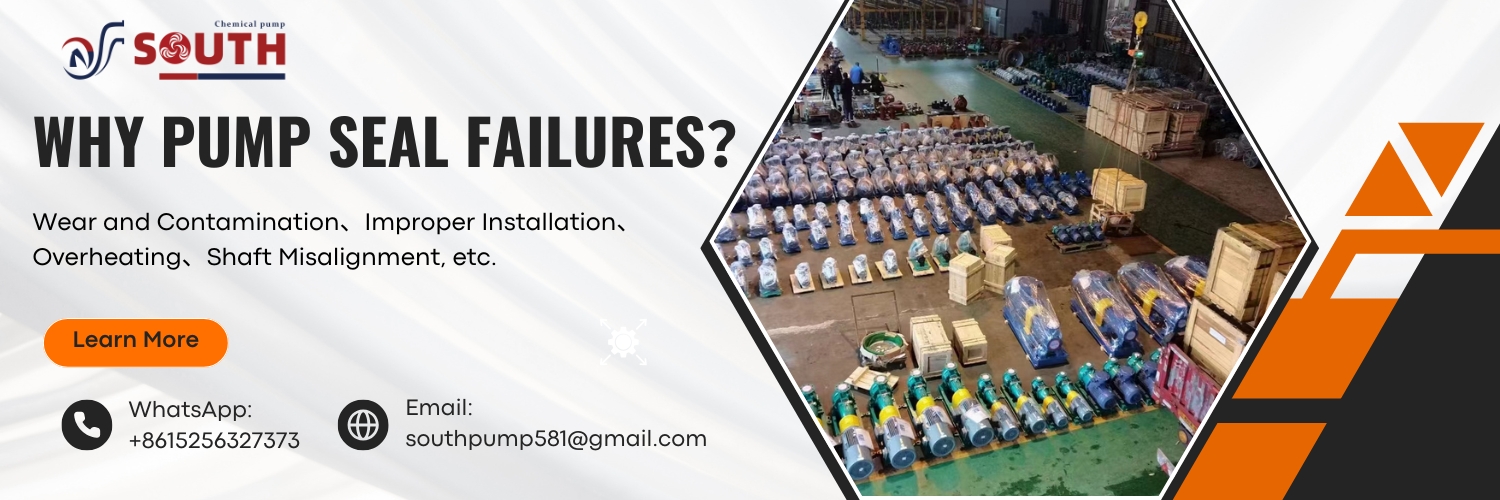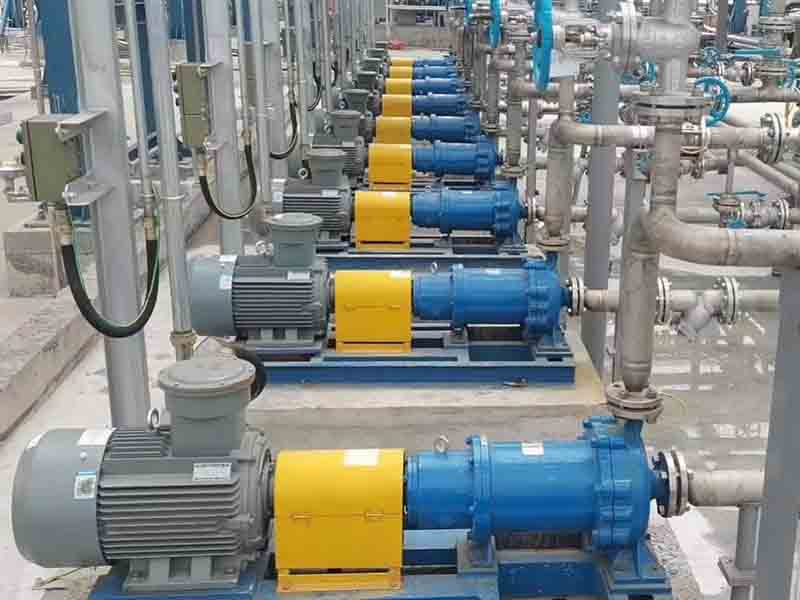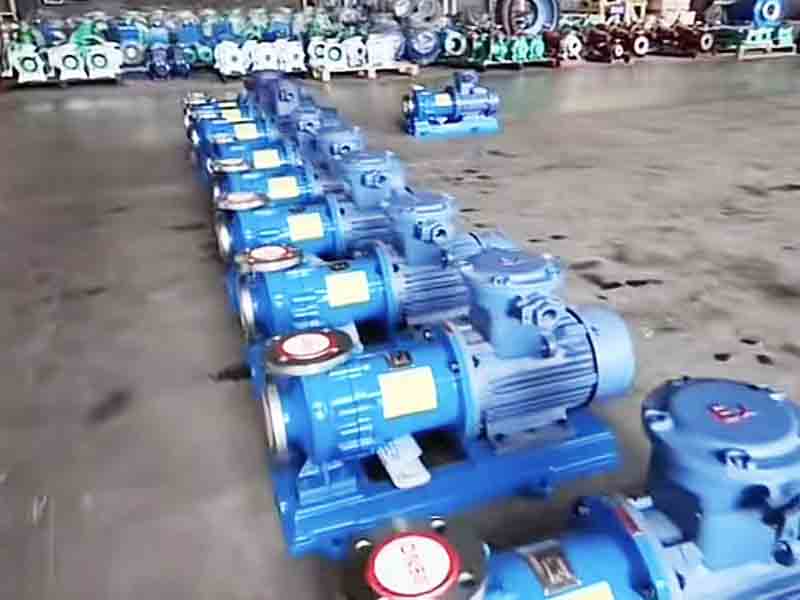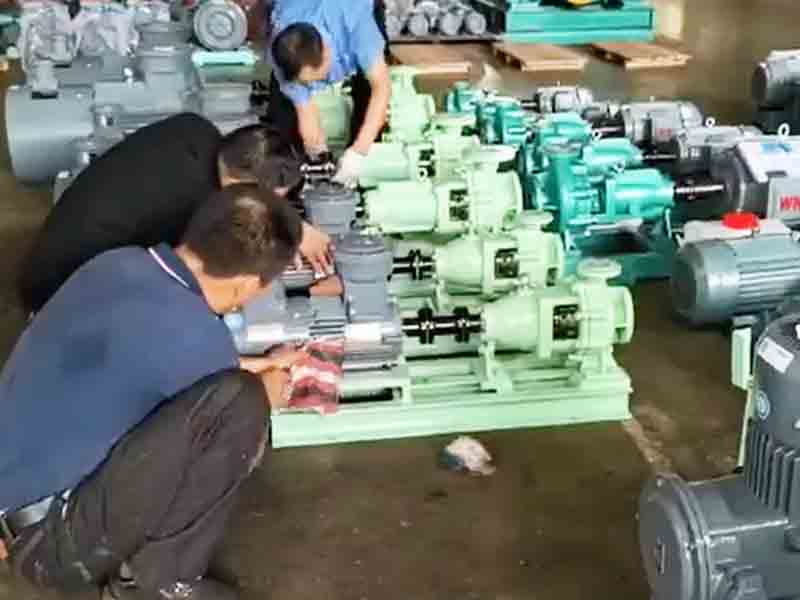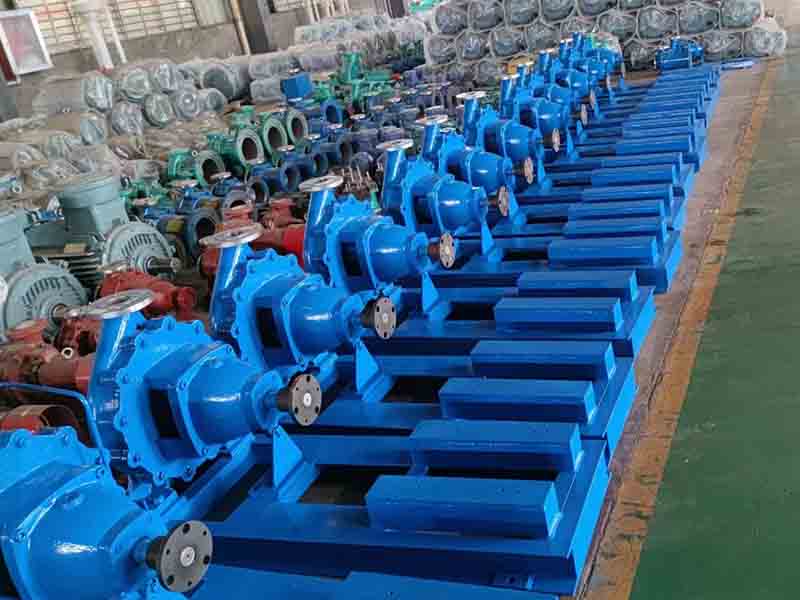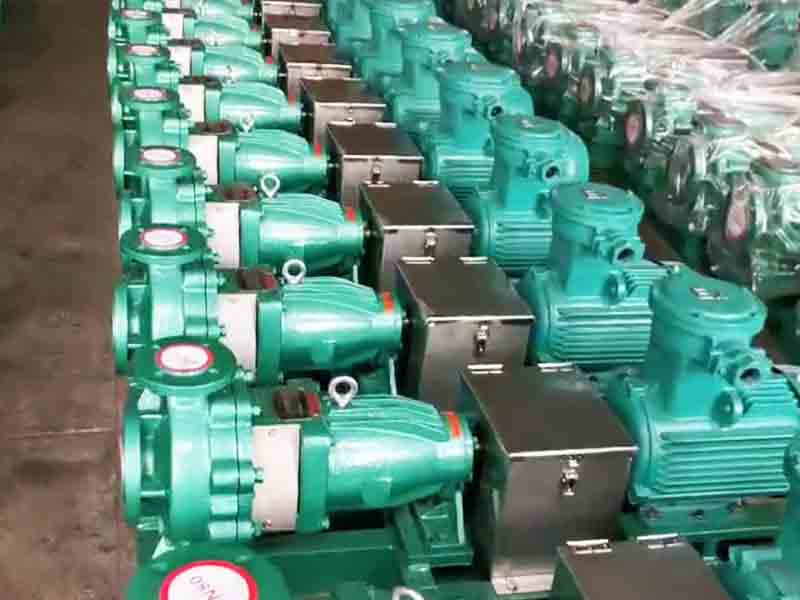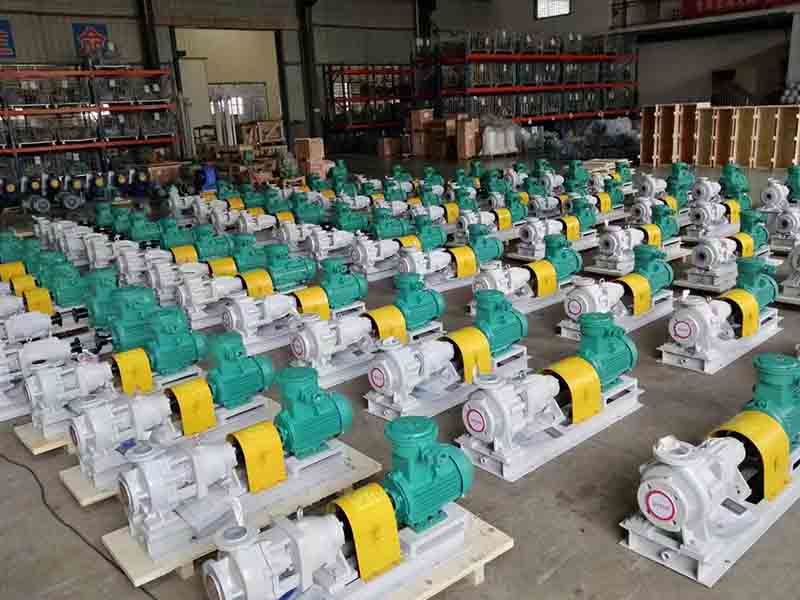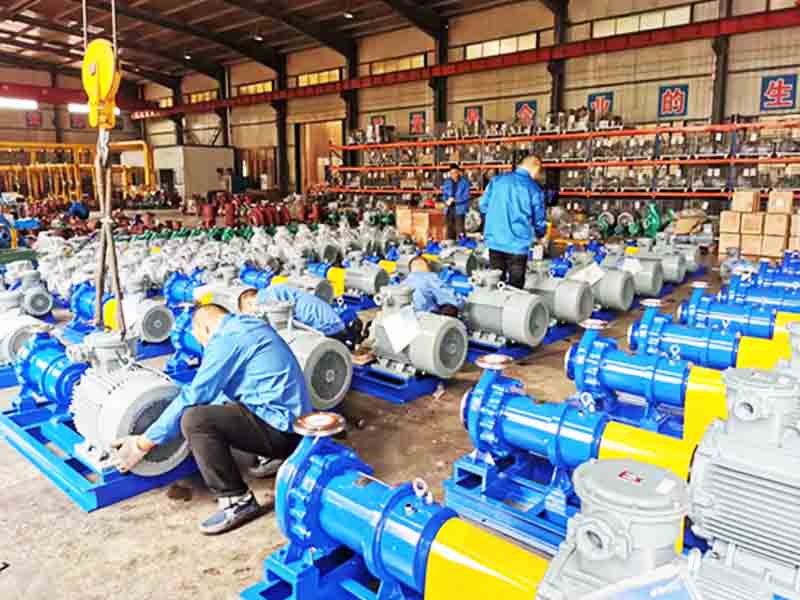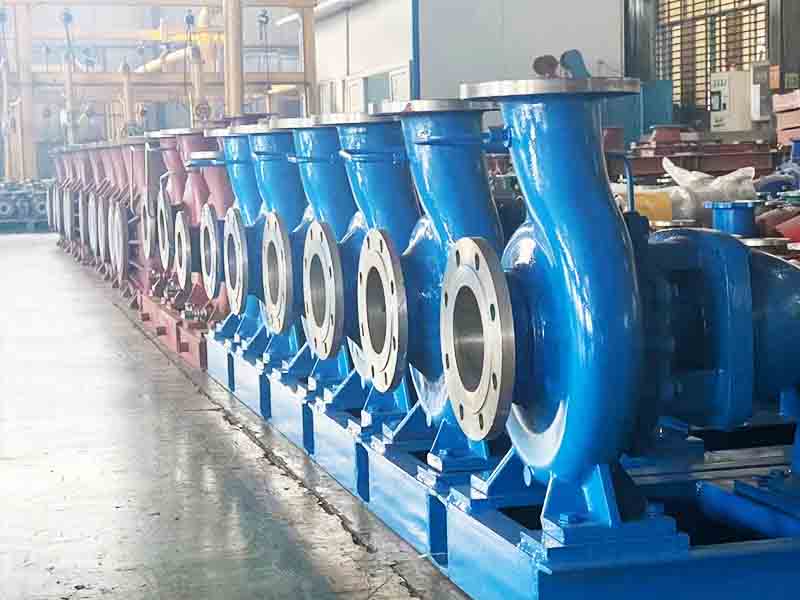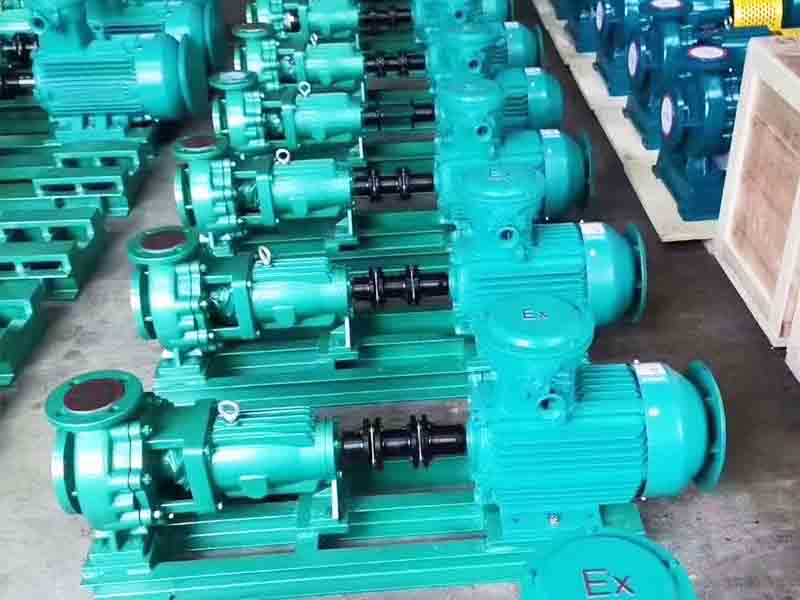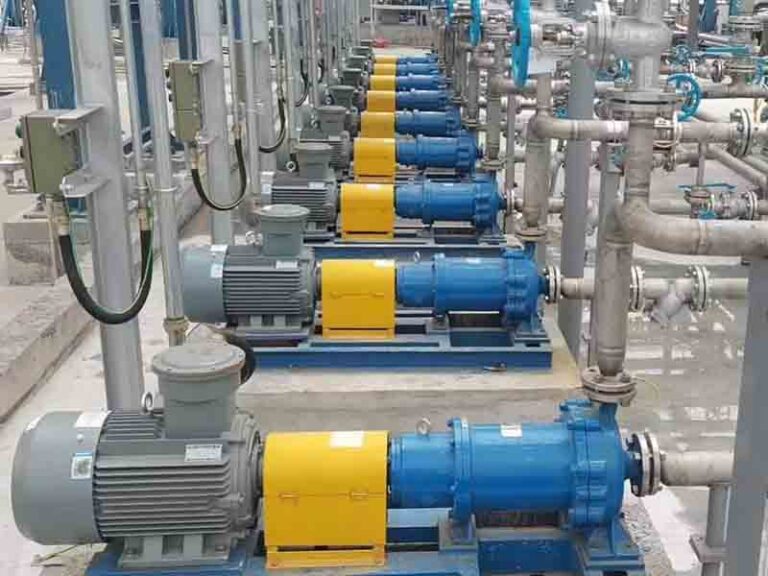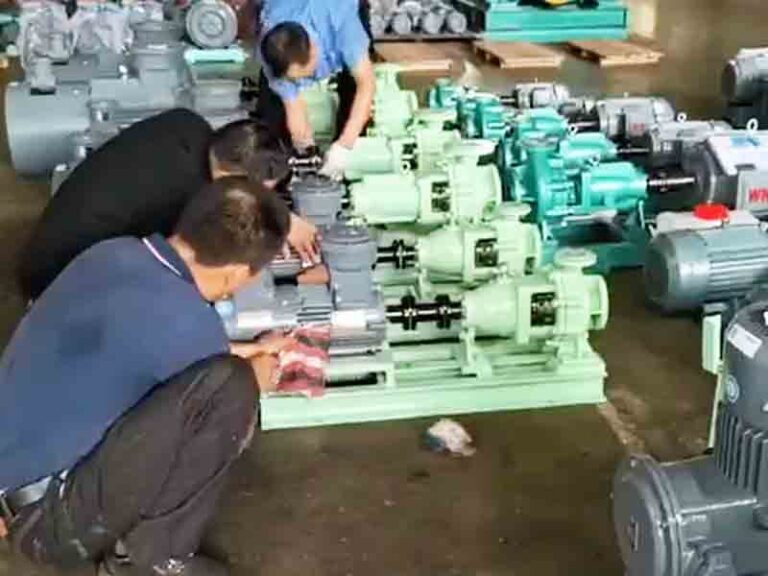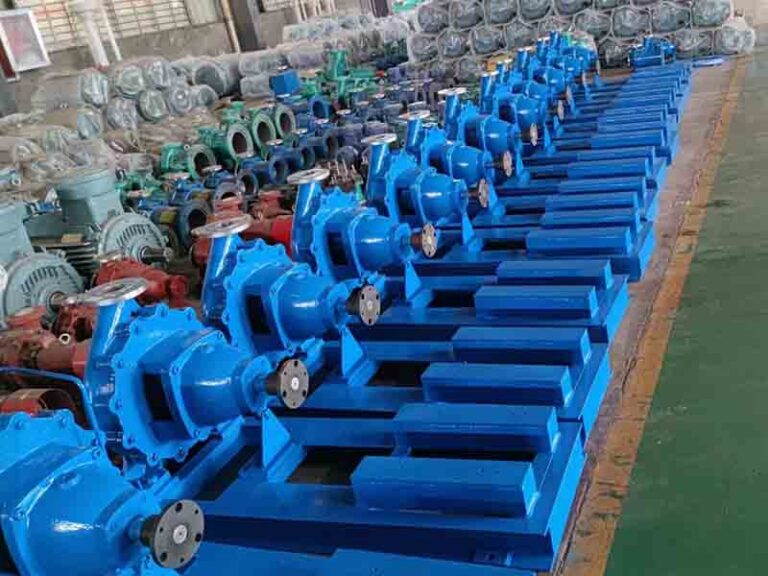In industrial production, the centrifugal pump is extremely important equipment, and the pump seal is like its ‘heart valve’, playing a key role in the stable operation of the electric centrifugal pump. Once the pump seal failure, not only will lead to production interruption, increase operating costs, but also may cause safety accidents and environmental pollution and other serious problems.
In this paper, we will analyse the common causes of pump seal failure, and provide practical prevention strategies to help enterprises to ensure the smooth progress of production.
The Working Principle of Mechanical Seals
Main Components
Mechanical seals are mainly composed of rotating and stationary surface ring, they are pressed against each other under the action of the mechanical spring, the resulting contact surface is precise, smooth and flat, constituting the main seal. The rotating rings and their mounting components need to seal tightly against the shaft, while the stationary rings need to seal reliably against the housing, and these two secondary seals are usually achieved by means of an O-ring or a sealing sleeve.
Importance of Material Selection
For common pumping scenarios, carbon – ceramic face materials and nitrile rubber (Buna-N) for secondary seals are the standard choices, and they are well suited to pumping ordinary water. However, when faced with specialised conditions such as pumping sewage or strong chemicals, a more suitable alternative material must be selected. In practice, many service centres often seek external expertise in this critical area of material selection.
Common Causes of Pump Seal Failures
Wear and Contamination
Over long periods of operation, self-priming pump seals are subjected to constant friction, pressure and frequent contact with a wide range of fluids, which inevitably leads to their gradual wear. Worse still, if abrasive particles such as sand and debris are mixed in with the pumping medium, the rate of seal wear will increase dramatically, leading to premature failure.
When the seal failure, usually accompanied by increased leakage, sealing surface damage and the overall performance of the classic centrifugal pump and other symptoms. To address this problem, companies should establish a regular inspection and timely replacement of worn seals system, while using efficient filtration systems to ensure that the pumping medium is always in a pure state of non-pollution.
Improper Installation
Incorrect seal selection, misalignment of the pump shaft and seal, or incorrect torque application during assembly may result in seal failure in a short period of time, or even problems immediately after installation. When improper installation occurs, leakage can occur in the seal area, making it difficult to achieve the desired pressure value of the system, as well as creating abnormal noise and vibration.
To prevent such problems, companies must ensure that the correct type and size of seal is selected during installation, that the manufacturer’s installation guidelines are strictly followed, and that specialised tools and techniques are used to carry out the assembly operation.
Overheating / Dry running
The proper functioning of a priming pump seal depends on the presence of a thin film of liquid between the sealing surfaces, which does the double duty of lubrication and cooling. If the magnetic driven pump runs dry, or if the sealing surfaces overheat due to insufficient lubrication, the seal will rapidly fail, leading to leakage. In this case, a sharp rise in seal temperature, a change in the colour of the sealing surface and possibly even a burning smell are usually observed.
To effectively prevent dry running and overheating, it is important to ensure that the slurry pump body is completely filled with liquid and that sufficient suction head is maintained before starting the stainless steel pump. In addition, a highly accurate temperature monitoring device should be installed so that any abnormalities can be detected in a timely manner.
Shaft Misalignment
Misalignment between the mag-drive pump shaft and seal can result from factors such as errors during installation, settling of the foundation, or excessive pipe stress. Misalignment can lead to uneven wear of the sealing surfaces, which can lead to leakage and, in severe cases, premature seal failure.
At this time, the magnetic drive pump will often show increased vibration, abnormal noise, and the wear pattern of the sealing surface shows an uneven state. In order to solve the problem of shaft misalignment, companies can make use of laser alignment tools to achieve precise alignment during installation, and at the same time regularly inspect the diesel pump shaft to detect and correct any misalignment in a timely manner.
Shocks and Vibrations
Cavitation phenomena, imbalance of rotating parts, and pipe resonance can trigger excessive shocks and vibrations. These shocks and vibrations can cause serious damage to pump seals, resulting in leakage or premature seal failure. When such problems occur, magnetic pumps exhibit significant increases in noise and vibration levels, visible damage to sealing components, and recurring leakage problems.
To mitigate the effects of shock and vibration, organisations need to ensure that chemical pumps and pipework are well designed, that good suction conditions are maintained to prevent cavitation, and that advanced vibration monitoring equipment is used to identify and deal with any abnormal vibration conditions.
Inadequate Maintenance
Neglecting regular maintenance of pump seals is a common cause of seal leakage and premature failure. Inadequate lubrication, failure to replace worn parts in a timely manner and infrequent seal inspections are all factors that can trigger seal problems. In such cases, pump performance will gradually deteriorate, leakage will gradually increase, and seal components will show obvious signs of wear.
In order to effectively prevent seal failure due to inadequate maintenance, companies should establish and strictly follow a comprehensive maintenance programme, including regular seal inspection, timely lubrication, as well as the first time to replace worn parts.
The Consequences of Pump Seal Failures
Financial Impact
pump seal failure triggered by production interruptions, often lead to high repair costs. More seriously, if the seal failure problem recurs, the cumulative cost is likely to exceed the initial purchase cost of the non-leakage magnetic pump itself. According to statistics, in some industrial operations, annual maintenance costs due to centrifugal impeller pump seal failure can run into hundreds of thousands of dollars or more.
Regulatory Compliance
When durable centrifugal pump seal failure is serious, it can lead to regulatory violations. For example, in some industries with extremely stringent environmental requirements, companies can face significant fines from regulators if a leak occurs. Certain regions have clearly defined standards for chemical company spills, and fines can run into the millions of dollars in the event of a violation.
Environmental and Safety Hazards
Product spills to the ground not only pollute the environment, but can also cause workers to slip and fall and get injured, posing a significant safety hazard. In industries that require high levels of hygiene, such as food manufacturing, spills can also create opportunities for contaminants to enter the process, which can have a serious impact on product quality and food safety.
How to Avoid Pump Seal Failure
Reducing Failure Through Pump Seal Design Improvements
There are many advantages to using the latest pump seal designs in the construction of new processes. For example, new centrifugal pumps can be designed to significantly improve efficiency, and a variety of advanced sealing surface materials can better withstand the harsh environment of the petrochemical process.
When companies inventory and evaluate pump assets, they should focus on acid-resistant chemical pumps whose maintenance history shows a decline in efficiency and prioritise their upgrade or replacement. When selecting efficient centrifugal pumps, seals and seal support systems, it is important to fully integrate them with specific process requirements to ensure efficient system operation.
Matching the Seal Support System to Specific Requirements
Selecting an appropriate seal support programme is a critical step in avoiding pump seal failure. The API 682 standard provides numerous programme options to meet different magnetic drive centrifugal pump seal support needs. These options can be broadly grouped into three categories:
Process Side Plan (Flush): This plan circulates process fluid through a flow control orifice into the seal cavity, both to effectively remove heat and to ensure proper pressure to prevent vaporisation of the pumped fluid. Several different variations are available for both horizontal and vertical pumps.
Inter-seal programme (barrier / cushioning): This programme provides a non-pressurised or pressurised fluid between the two seals, adding a layer of protection against leakage, particularly of volatile fluids. In addition, a buffer and barrier gas (typically nitrogen) can be introduced externally to provide a constant source of clean, dry gas between the inner and outer seals, and the pressure of the nitrogen entering the seal cavity can be controlled by a regulator.
Atmospheric side programme (rapid cooling): This programme is primarily used to prevent solids from forming on the seal surface and to ensure that moisture does not enter the housing. For example, vapour supplied through a reservoir prevents icing on the atmospheric side of a single seal, especially in vertical pumps. Similarly, an externally introduced rapid cooling fluid (e.g. steam, clean water or nitrogen) can prevent or remove solids from forming on the seal surface.
Proper Installation of Pump Seals is Key to Reliability
From the anchoring of the foundation and base plate to the installation of the seal support system, every component must be properly installed, carefully configured and rigorously tested. Problems such as misalignment, loose bolts, inadequate lubrication or improperly configured support systems can be potential causes of engine centrifugal pump seal failure. Excessive vibration, worn bearings, and inadequate flushing or cooling of seals can eventually lead to leakage problems.
For new plant expansion projects, there is greater flexibility in the siting and design of pumps and associated infrastructure. For replacement installations in older plants, the limitations of the existing infrastructure need to be taken into account. In either case, engineers should be acutely aware of the importance of “getting it right first time”, ensuring that pumps, seals and seal support systems operate reliably from the outset.
Proactive Maintenance Reduces Many Causes of Pump Seal Failure
With the right choice of pumps, seals and seal support systems, it is vital that proactive preventative maintenance is carried out based on asset performance history. With the help of an enterprise asset management system, companies can track the detailed installation history and maintenance of pumps to develop an optimal maintenance programme based on the frequency of use, the type of process and the manufacturer’s recommendations.
Data-driven maintenance strategies are proven to be effective in optimising operational resources and identifying and resolving potential problems before they lead to unplanned equipment downtime due to pump seal failure.
Avoid Typical Pump Seal Failures by Partnering with Experienced Local Professionals
Partnering with experienced professionals who are familiar with local refinery conditions offers significant advantages in the selection of seal support systems. These local vendors not only have deep expertise in helping companies comply with local regulations, but they can also advise on the most appropriate seal support system plan for your needs.
Pump Seal Providers
The role of value-added seal suppliers in analysing failure and recommending products
Value-added seal suppliers can play an important role when it is difficult to determine the cause of standard centrifugal pump seal failure. By analysing the specifics of a seal failure in depth, and by carefully questioning the key issues associated with the application, they can recommend the most suitable product for the business. Although their products may be relatively expensive, their expertise and accurate product recommendations can add value to the organisation.
How to identify a good value-added seal supplier
When selecting a value-added seal supplier, companies should focus on whether they will ask about key parameters such as application temperature and pressure, rather than limiting themselves to basic information such as pump ID or size. If the supplier is only concerned about the price or size, but ignored the application of the specific conditions, the enterprise is likely to buy the product is not suitable, so as to meet the actual needs.
FAQs about Pump Failures:
Pump Life Expectancy
The life expectancy of a magnetic drive pump is affected by a variety of factors, including operating conditions, maintenance frequency, and pump type. Generally, most pumps have a service life of between 5 – 15 years when properly maintained.
Causes of Abnormal Pump Noise
Abnormal pump noise can be caused by a number of things, such as cavitation, air leaks, bearing wear, impeller damage, or magnetic drive centrifugal pump shaft misalignment.
Causes of Excessive Pump Vibration
Excessive pump vibration is usually caused by shaft misalignment, imbalance, cavitation, bearing wear, or improper installation.
Causes of Pump Seal Failure
The main causes of chemical magnetic pump seal failure include seal wear, high pressure, misalignment, temperature fluctuations, and media contamination, all of which can lead to seal leakage problems.
Are Submersible Pumps More Likely to Fail
Submersible pumps are more prone to failure problems than other types of self-priming centrifugal pumps due to the fact that they operate in extreme underwater environments where they are exposed to a relatively high risk of seal failure, water ingress, electrical failures and insulation damage.
The Best Way To Remotely Monitor Pump Health
Currently, technologies such as electrical signature analysis (ESA), vibration monitoring, and IoT-based condition monitoring enable real-time remote diagnostics of pumps to effectively monitor pump health.
Types of Maintenance Plans to Follow to Prevent Pump Failure
Maintenance plans to prevent magnetic-drive (Mag-drive) pump failure should include periodic inspections, lubrication, seal inspections, vibration analyses, and thermal imaging, etc., and the inspection period can be set monthly, quarterly, or annually, depending on the actual situation.
Conclusion
The causes of self-priming pump seal failure are many and varied, covering wear and contamination, improper installation, overheating/dry running, shaft misalignment, shock and vibration, and inadequate maintenance. In order to effectively avoid these problems, companies can take a series of measures, including improving pump seal design, properly matching the seal support system, ensuring proper installation, strengthening proactive maintenance and working with professional suppliers.
By paying attention to and implementing these preventive methods, enterprises can significantly improve the reliability of the pump seal, to ensure the stable operation of the entire pumping system, so as to provide a strong guarantee for the smooth running of production.
